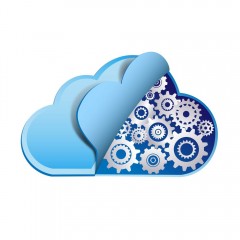Platform As A Service Or Software As A Service
I was recently talking to a local small business manager who told me about how his company saved itself by switching format. Clients demanded to get updates and they felt compelled to comply. Payment in a one-time fee meant that the longer clients used their software the less they profited. This turned around when they went to a monthly plan: clients became a cash flow and they have the resources to update generously. I wanted to share this because it is so similar to the experience I had in deciding the form of the service provided by Gym Insight.
This sort of software as a service (SAAS) is essentially what is popularly called the cloud. The software that you sign up for is hosted on the provider’s server and you have a license to access it through your account. At your end you just need a basic Internet access point, which can be a PC, Mac, tablet or even an inexpensive Chromebook, and a connection to the Internet.
Many companies haves switched to the newer model because it helps everyone involved. If you receive one upfront payment something will happen to allocate the income or there will be a temptation to take a profit. With the SAAS model you will have a continuous flow of income over an extended period that can be reinvested into updates and service delivery.
Everything Works Better Together In The Cloud
The exciting part of service in the cloud is that even the small business owner who may not be technologically sophisticated can have access to systems and tools that would have cost millions not so long ago. There is a long list of advantages for SAAS. Principally there is no on-site installation or investment in equipment. Updates and support is handled centrally so that they are dealt with quickly and efficiently. Finally, there is less cost or any of the added complexities of installed software, it just works more easily.
Microsoft Office and Intuit QuickBooks seem to be focusing all of their development efforts on the cloud based versions of their systems. This works out for the best for everyone. Systems with data sharing features (APIs) integrate directly with them. You can build up a modular system that goes beyond what the original service allowed on its own. This is something that you could never do with installed software. You can match your bookkeeping system to your customer relations management system or your inventory and invoicing service.
Pay A Nickel And Pivot On A Dime
There is still a long way to go but there are a few hints as to how the trend will develop. Tighter integration across more platforms comes from services such as IFTTT and zapier.com. At present the number of applications these services can string together is limited but growing. Eventually it is likely that there will be easy to use, low cost solutions for just about any business situation.
The principle is that by accessing your account in a service an action is triggered by an event. The action is in some other service to which you subscribe. The triggers and actions are still pretty basic. It is likely that in the near future such services will become more sophisticated and take integrations to high levels of customization.
If you are familiar with salesforce.com you know how SAAS applications can scale very easily. You just add an additional license for each new user. There is no hassle of adding equipment and dealing with an IT department.
Within a few years, gym start ups and studios will put together information systems on an ad hoc basis that in previous years small to medium sized business could only dream of. The marketplace that business must compete in will probably be more turbulent than ever, so the ability to quickly reconfigure information management systems will be vital to survival.
Less Installed Software More Dynamic Information Management
Insight makes the best use of both approaches to software tools. The management features are delivered from the cloud, for other things like RFID and twenty-four hour access we deliver onsite software that fits those roles best.
What it means is that, like other applications that rely on the cloud there is no burden of having to make sure you have the latest updates, no issues of IT support and capital in the servers needed to run a dedicated system. It also means that your cost is directly proportional to the number of users; you only pay for what you need and grow the system with the business.
Bibliography
Jones, Don. “The Business Case for Software as a Service (SaaS).” Quest Software. 2010. https://www.quest.com/quest_site_assets/whitepapers/wpw_saas_jones_us_mj.pdf (accessed November 30, 2014).
